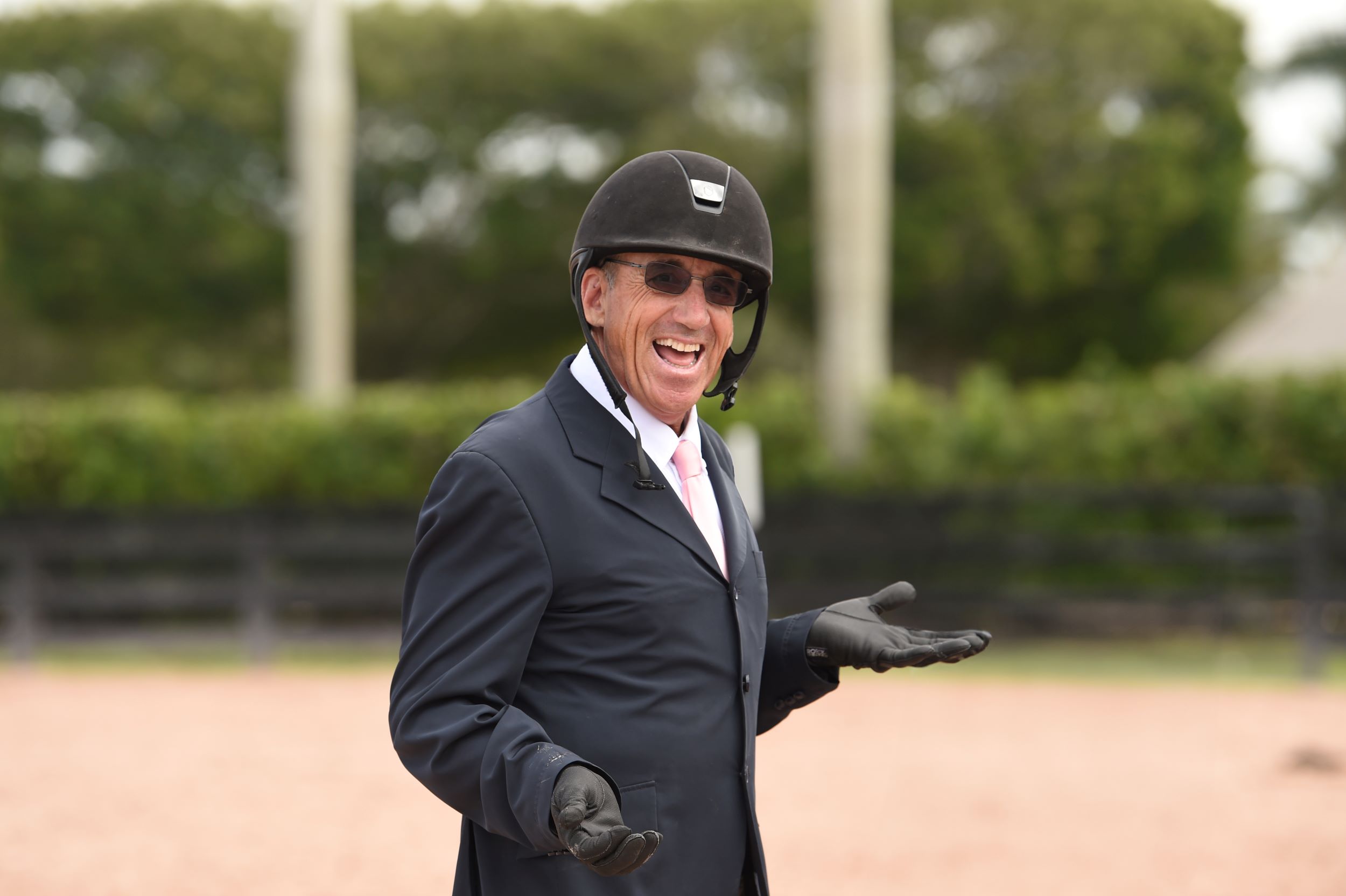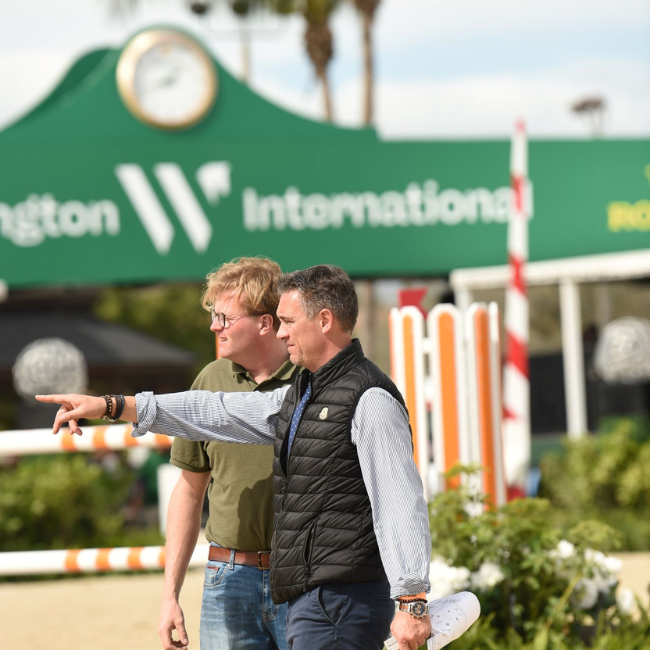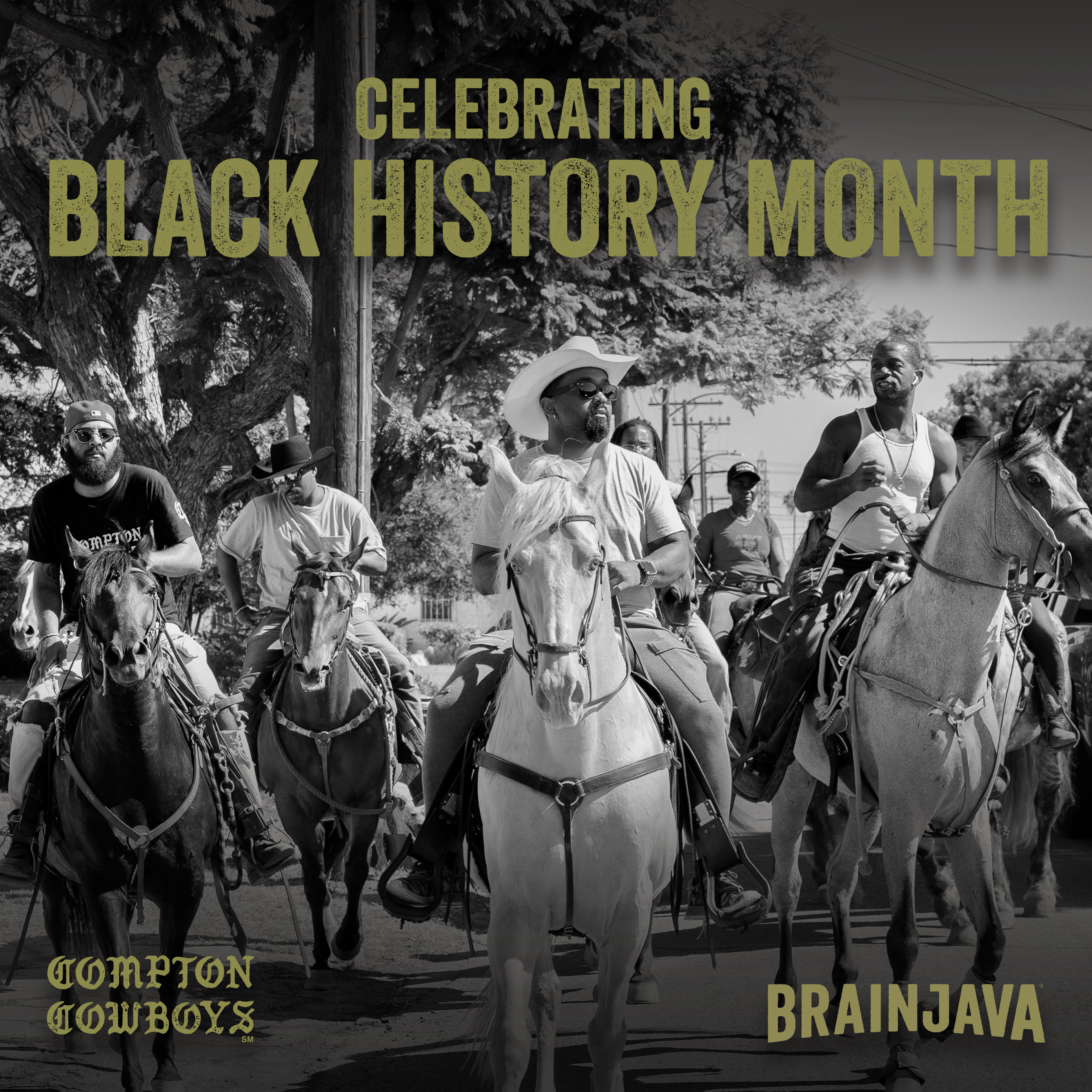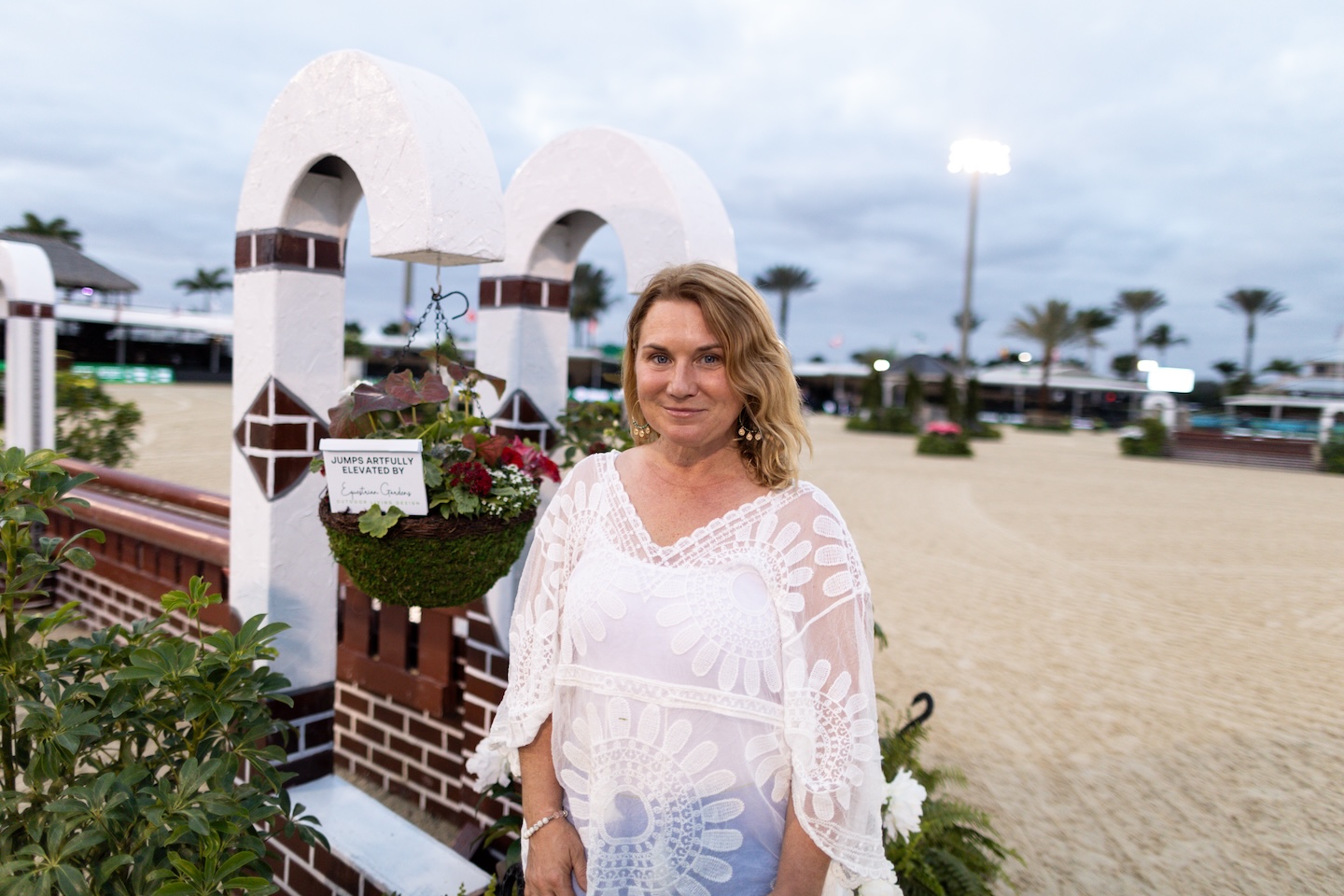Andy Christiansen is no stranger to creating courses for horses at any level, but as ring crew supervisor at Wellington International, he also needs to cater to all levels.
“You have to know your customers and understand why you do things,” Andy – an FEI Level 3 and USEF R course designer named USHJA course designer of the year in 2021 – said this week. He is currently back home with his family in Wellington after a summer tour on and off the road to Michigan, California, the Carolinas and South America.
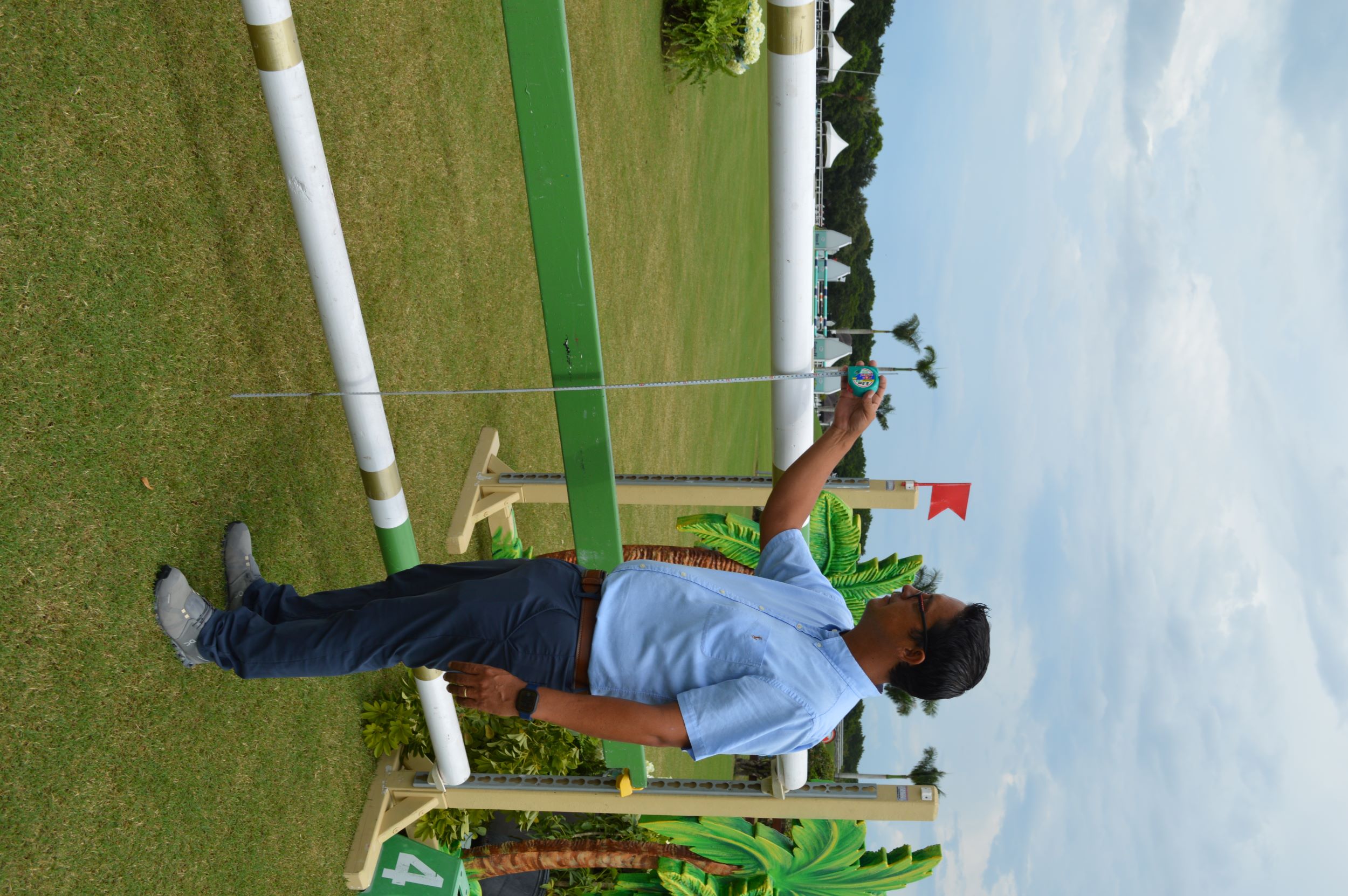
“There are so many things that you have to take into consideration – level, heights, distances, specs, rules, footing and again, customers. Because we’re responsible for everything that happens in the show ring when WEF [Winter Equestrian Festival] is on,” he said.
When WEF gets underway at Wellington International in Wellington, Florida, Andy directs a team of some 50 Ring Crew to oversee all 13 – sometimes 15 – rings with both Hunter and Jumper classes. A multitude of things need to be done and coordinated behind the scenes, and Andy’s team moves like stagehands in a theater – keeping the show on track but avoiding the limelight.
“That’s one of my jobs, to coordinate with management and course designers to ensure that I have everything that’s needed with materials and enough guys at the right times and at the right place,” said Andy. “These guys are professional Ring Crew. It’s what they do for a living, and they look forward to coming here year after year. I try to keep the same team each season because I am grateful to have a great group of guys, and it’s just easier on everybody. They know the material, they know the place, they know the routine, they know who they work for. They know how we like things done and that’s basically it. We try our best to do a good job without being noticed.”
Andy grew up with horses in Ecuador and learned his craft as a course designer over time, attending clinics and gleaning information from mentors such as Anthony D’Ambrosio, Steve Stephens and Guilherme Jorge, to name a few. “There are a few really good course builders who have been responsible for my education,” Andy said.

Andy started course designing some 15 years ago and has notably been on the course designing team for the 2018 World Equestrian Games in Tryon, NC, the Pan American Games in Lima, Peru in 2019 and last year’s Pan American Games in Santiago, Chile.
In two months time, he heads home to his native Ecuador to design for the South American Youth Championships in Quito. “I love the sport and enjoy the challenge of building tracks for top sport and those types of events,” Andy said. “It comes from loving horses and having a passion for the sport.”
Each course designer has his own style, and riders paying attention can spot the similarities.
“I’m sure some of my customers can tell by just looking at my lines and the usage of the arena who designed the course,” said Andy. “There’s always a reason why, for everything – knowing where and when to use different types of questions, like Liverpools, skinny fences, planks and related distances.”
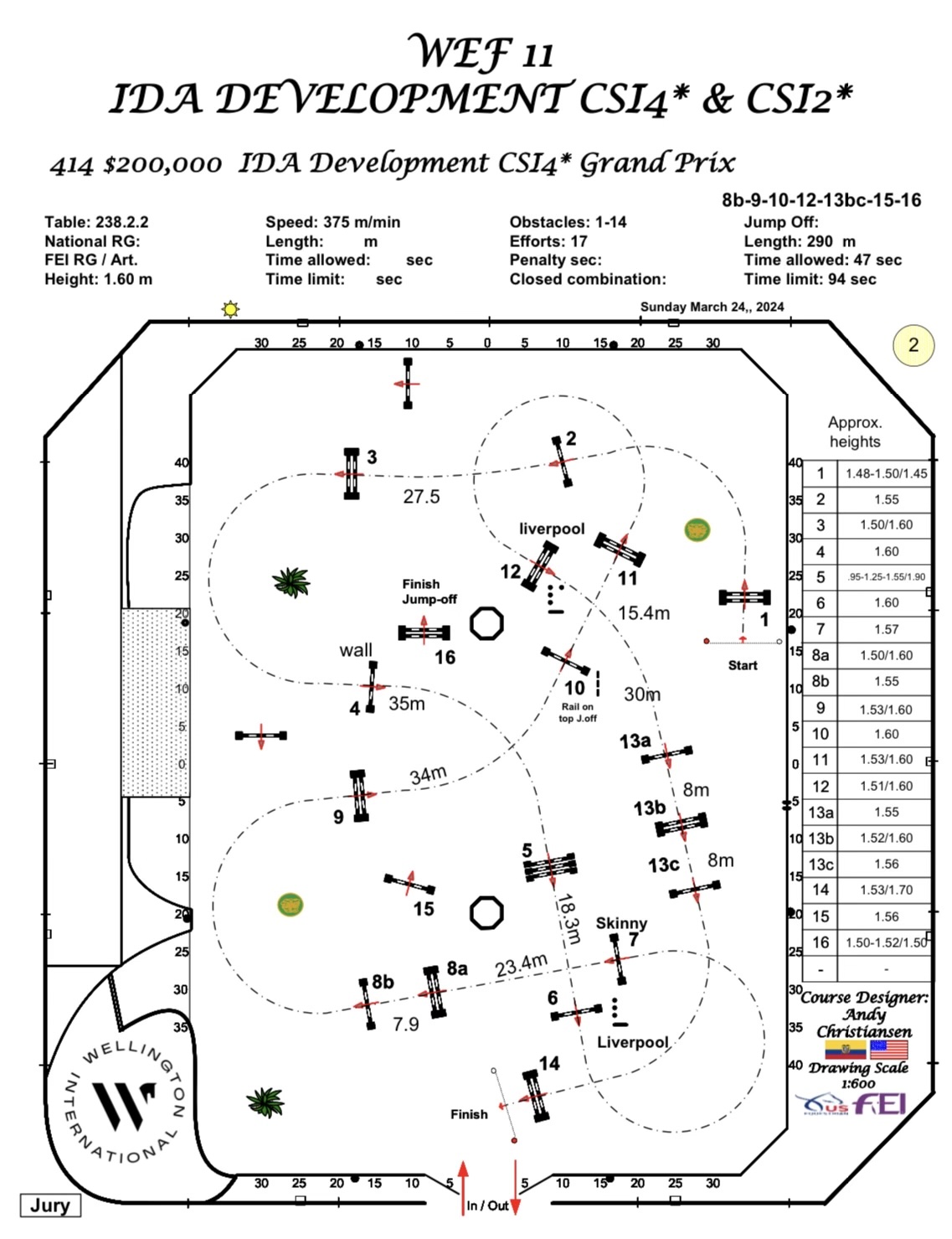
Course designing is a combination of art and science and the computer aids the process. “When you get invited to go somewhere new, you ask all the specifics about the job and shape of the ring but some rings are built differently than others,” Andy said. “Perhaps, it’s like a plan for building a house, everything has to make sense…you have to know the area that you’re going to work on, and all the dimensions and materials and after that you make your drawings to scale. That way you don’t get any surprises when you go out in the ring and have to say, ‘Oh this doesn’t fit or it doesn’t work’. Because you already know what to expect.
The recent Paris Olympic Games proved to be a master class in the craft of course designing. France’s Grégory Bodo, who designed at WEF last season – his first visit and assignment in the USA – was one of the team of show jumping course designers at Versailles.
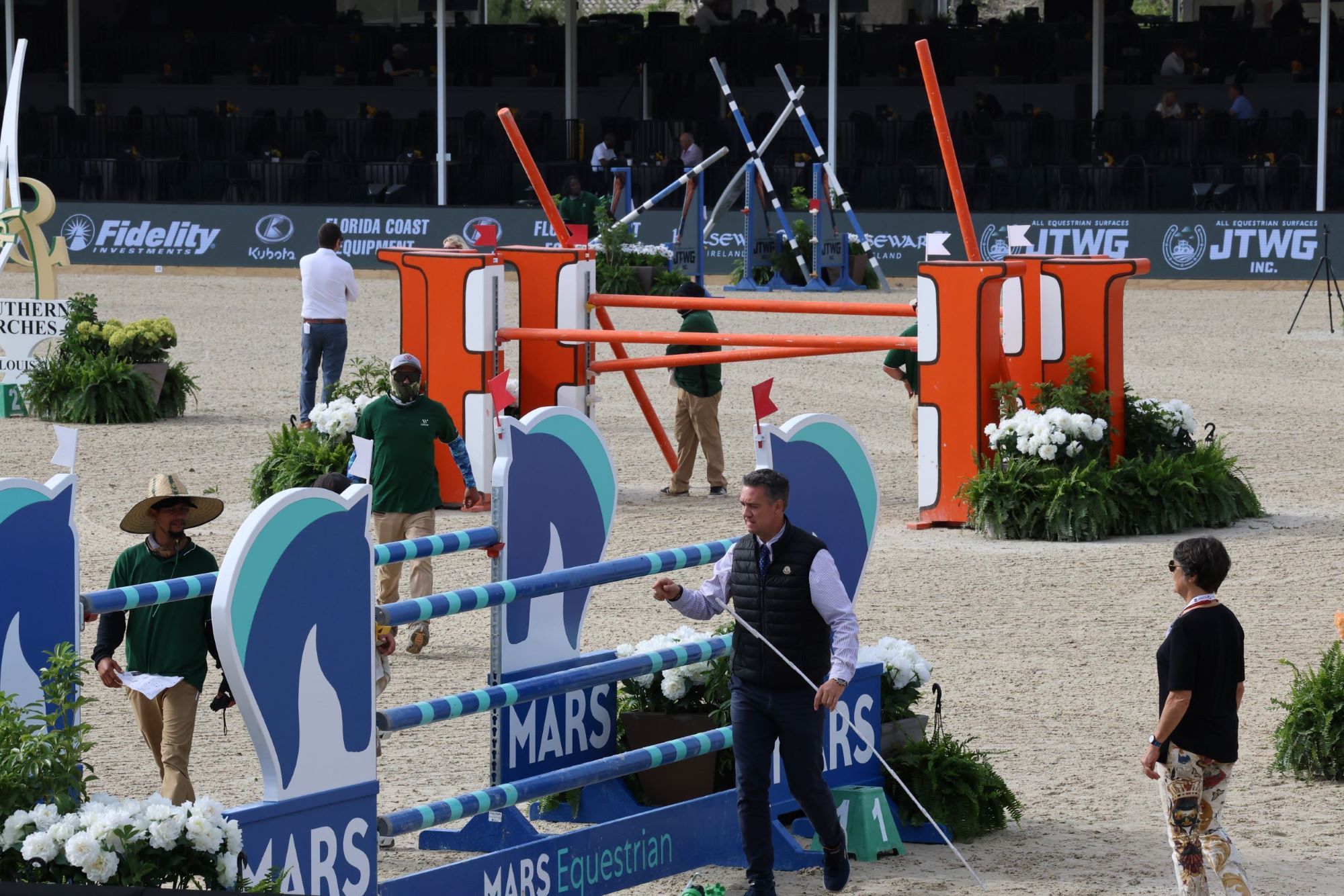
“To me, they did an amazing job,” said Andy of the Olympics. “The sport was fantastic. All the tracks were on point and everything worked out in their favor.” In the individual medal finals the jump off came down to Gold, Silver and Bronze placings. “They had three in the jump off. The perfect score for this type of event, ” said Andy. “You plan for it, you really want it to happen that way. You’re obviously aiming for a really good result but you know sometimes it happens – sometimes it doesn’t.”
Course designing for big events is a process requiring days of advanced planning. “When I have the honor to course design in the main arena for a big week of top sport, I try to be well prepared ahead of time,” said Andy. “By showing up to the venue with most of my drawings finalized and ready. That way I give myself enough time to watch my customers’ performances and the way that the competition is running.
“I like to plan my week by drawing my two main classes – first the qualifier and then my Grand Prix, or vice versa, depending on what I have in mind. Then, I work out tracks for the rest of the week so I don’t repeat the same tests and the same type of tracks.
“You have to know your customers. You have to know what you’re designing for, you have to know the challenge of your course – how you want your questions to work, and what is right for the time allowed. You don’t want to overdo it but you also don’t want to have a very easy course, there has to be a good balance. During WEF there is a rotation of rings and course designers, in the smaller level rings, you’re teaching young riders and young horses and you don’t want to over face them, but give them a good experience with tracks that are less complicated.”

Andy has tapped into his artistic side, designing some of the Hunter Derby jumps when the inspiration takes him. “I don’t do a lot of designing,” he said. “But if I see something that I like or something that crosses my mind, I draw it and put it on the computer, and then I talk to our jump builder and see how to make it possible. It’s super cool, once the complete project is finished and you see it out in the ring. In general, people like new jumps and attractive new fences that make sense, and they are very complimentary when they see something new and nice brought into the arena.”
Andy, 38, will be in Ecuador for 11 days before returning to Wellington with his wife, Marge and children Julian, Sebastian, Nicholas and Abby. WEF gets underway in January, and Andy does not underestimate the commitment involved.
“It’s one of the most important shows in the world. If it’s not the biggest show, it’s one of the biggest shows on the planet. Top-level of horses and riders, great management and a very good team of officials…the best of the best,” he said. “We run for 13 weeks and we run 15 show rings. It’s a lot, but somehow, we make it work. I’m proud to be part of a company like this. I think we do a good job, we are a great team, and we like doing what we do. And it shows because it’s done very well.”
Written by Sarah Eakin for Paper Horse.

